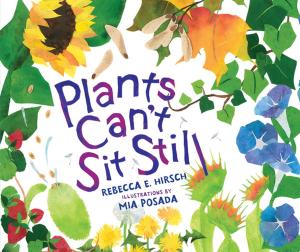Botany for Ladies
A Popular Introduction to the Natural System of Plants, According to the Classification of De Candolle (Illustrations)
Kids, Natural World, Trees and Forests, Nonfiction, Science & Nature, Nature, Plant Life, Trees, Science, Biological Sciences, Botany| Author: | Jane Loudon | ISBN: | 1230000272453 |
| Publisher: | LONDON: BRADBURY AND EVANS | Publication: | October 6, 2014 |
| Imprint: | Language: | English |
| Author: | Jane Loudon |
| ISBN: | 1230000272453 |
| Publisher: | LONDON: BRADBURY AND EVANS |
| Publication: | October 6, 2014 |
| Imprint: | |
| Language: | English |
Example in this ebook
When I was a child, I never could learn Botany. There was something in the Linnean system (the only one then taught) excessively repugnant to me; I never could remember the different classes and orders, and after several attempts the study was given up as one too difficult for me to master. When I married, however, I soon found the necessity of knowing something of Botany, as well as of Gardening. I always accompanied my husband in his visits to different gardens; and when we saw beautiful flowers, I was continually asking the names, though alas! these names, when I heard them, conveyed no ideas to my mind, and I was not any wiser than before. Still the natural wish to know something of what we admire, impelled me to repeat my fruitless questions; till at last, vexed at my ignorance, and ashamed of not being able to answer the appeals which gardeners often made to me in doubtful cases, (supposing that Mr. Loudon’s wife must know everything about plants,) I determined to learn Botany if possible; and as my old repugnance remained to the Linnean system, I resolved to study the Natural one. Accordingly I began; but when I heard that plants were divided into the two great classes, the Vasculares and the Cellulares, and again into the Dicotyledons or Exogens, the Monocotyledons or Endogens, and the Acotyledons or Acrogens, and that the Dicotyledons were re-divided into the Dichlamydeæ and Monochlamydeæ, and again into three sub-classes, Thalamifloræ, Calycifloræ, and Corollifloræ, I was in despair, for I thought it quite impossible that I ever could remember all the hard names that seemed to stand on the very threshold of the science, as if to forbid the entrance of any but the initiated.
Some time afterwards, as I was walking through the gardens of the Horticultural Society at Chiswick, my attention was attracted by a mass of the beautiful crimson flowers of Malope grandiflora. I had never seen the plant before, and I eagerly asked the name. “It is some Malvaceous plant,” answered Mr. Loudon, carelessly; and immediately afterwards he left me to look at some trees which he was about to have drawn for his Arboretum Britannicum. “Some Malvaceous plant,” thought I, as I continued looking at the splendid bed before me; and then I remembered how much the form of these beautiful flowers resembled that of the flowers of the crimson Mallow, the botanical name of which I recollected was Malva. “I wish I could find out some other Malvaceous plant,” I thought to myself; and when we soon afterwards walked through the hothouses, I continued to ask if the Chinese Hibiscus, which I saw in flower there, did not belong to Malvaceæ. I was answered in the affirmative; and I was so pleased with my newly-acquired knowledge, that I was not satisfied till I had discovered every Malvaceous plant that was in flower in the garden. I next learned to know the Cruciferous and Umbelliferous plants; and thus I acquired a general knowledge of three extensive orders with very little trouble to myself. My attention was more fairly aroused, and by learning one order after another, I soon attained a sufficient knowledge of Botany to answer all the purposes for which I wished to learn it, without recurring to the hard words which had so much alarmed me at the outset. One great obstacle to my advancement was the difficulty I had in understanding botanical works. With the exception of Dr. Lindley’s Ladies’ Botany, they were all sealed books to me; and even that did not tell half I wanted to know, though it contained a great deal I could not understand. It is so difficult for men whose knowledge has grown with their growth, and strengthened with their strength, to imagine the state of profound ignorance in which a beginner is, that even their elementary books are like the old Eton Grammar when it was written in Latin—they require a master to explain them.
To be continue in this ebook................................................................................................................
Example in this ebook
When I was a child, I never could learn Botany. There was something in the Linnean system (the only one then taught) excessively repugnant to me; I never could remember the different classes and orders, and after several attempts the study was given up as one too difficult for me to master. When I married, however, I soon found the necessity of knowing something of Botany, as well as of Gardening. I always accompanied my husband in his visits to different gardens; and when we saw beautiful flowers, I was continually asking the names, though alas! these names, when I heard them, conveyed no ideas to my mind, and I was not any wiser than before. Still the natural wish to know something of what we admire, impelled me to repeat my fruitless questions; till at last, vexed at my ignorance, and ashamed of not being able to answer the appeals which gardeners often made to me in doubtful cases, (supposing that Mr. Loudon’s wife must know everything about plants,) I determined to learn Botany if possible; and as my old repugnance remained to the Linnean system, I resolved to study the Natural one. Accordingly I began; but when I heard that plants were divided into the two great classes, the Vasculares and the Cellulares, and again into the Dicotyledons or Exogens, the Monocotyledons or Endogens, and the Acotyledons or Acrogens, and that the Dicotyledons were re-divided into the Dichlamydeæ and Monochlamydeæ, and again into three sub-classes, Thalamifloræ, Calycifloræ, and Corollifloræ, I was in despair, for I thought it quite impossible that I ever could remember all the hard names that seemed to stand on the very threshold of the science, as if to forbid the entrance of any but the initiated.
Some time afterwards, as I was walking through the gardens of the Horticultural Society at Chiswick, my attention was attracted by a mass of the beautiful crimson flowers of Malope grandiflora. I had never seen the plant before, and I eagerly asked the name. “It is some Malvaceous plant,” answered Mr. Loudon, carelessly; and immediately afterwards he left me to look at some trees which he was about to have drawn for his Arboretum Britannicum. “Some Malvaceous plant,” thought I, as I continued looking at the splendid bed before me; and then I remembered how much the form of these beautiful flowers resembled that of the flowers of the crimson Mallow, the botanical name of which I recollected was Malva. “I wish I could find out some other Malvaceous plant,” I thought to myself; and when we soon afterwards walked through the hothouses, I continued to ask if the Chinese Hibiscus, which I saw in flower there, did not belong to Malvaceæ. I was answered in the affirmative; and I was so pleased with my newly-acquired knowledge, that I was not satisfied till I had discovered every Malvaceous plant that was in flower in the garden. I next learned to know the Cruciferous and Umbelliferous plants; and thus I acquired a general knowledge of three extensive orders with very little trouble to myself. My attention was more fairly aroused, and by learning one order after another, I soon attained a sufficient knowledge of Botany to answer all the purposes for which I wished to learn it, without recurring to the hard words which had so much alarmed me at the outset. One great obstacle to my advancement was the difficulty I had in understanding botanical works. With the exception of Dr. Lindley’s Ladies’ Botany, they were all sealed books to me; and even that did not tell half I wanted to know, though it contained a great deal I could not understand. It is so difficult for men whose knowledge has grown with their growth, and strengthened with their strength, to imagine the state of profound ignorance in which a beginner is, that even their elementary books are like the old Eton Grammar when it was written in Latin—they require a master to explain them.
To be continue in this ebook................................................................................................................















